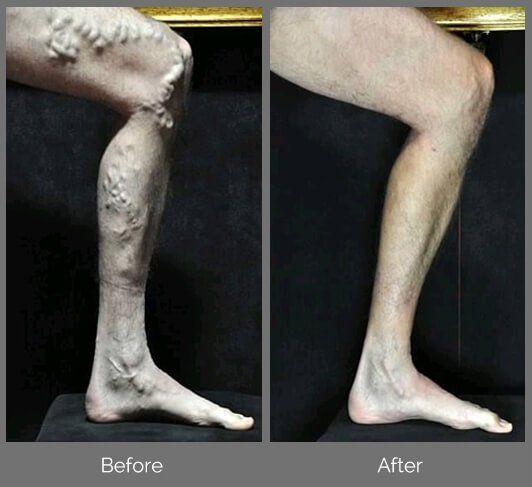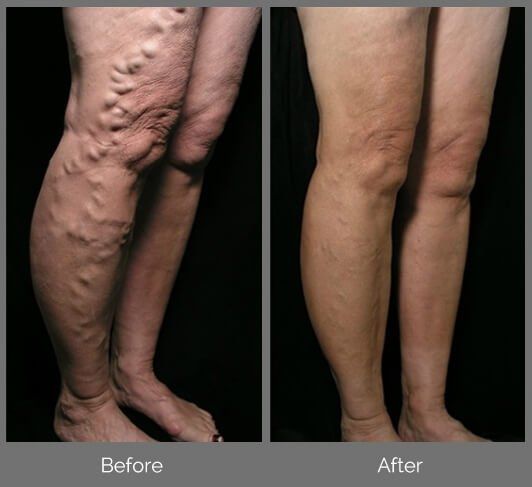Varicose Veins
What are Varicose Veins?
In healthy veins, one way valves direct the flow of venous blood in the leg upward toward the heart. When one or more of these valves fails to function, the blood in the malfunctioning vein flows in the reverse direction, causing the veins under the skin to engorge and distend. The “back up” of blood flow increases the pressure in the veins to a level that is three to four times the normal amount. This high pressure then causes the veins to bulge and stretch and usually results in inflammation and pain.
Varicose veins do not occur suddenly. It can take years for signs and symptoms to develop. While genetics and inheritance play a big role in their occurrence, anyone can develop them even without a family history. They commonly occur during pregnancy and in people that have had certain types of leg injuries or deep vein blood clots. People that work in jobs that require prolonged standing or sitting are also at higher risk. A physical exam, along with an ultrasound, is necessary to determine the extent and severity of the varicose veins and if the varicose veins are caused by broken valves in the veins underlying the skin. Although less common, it is possible to have varicose veins and not experience painful symptoms.
Symptoms of Varicose Veins
- Pain or a heavy feeling in the legs relieved by elevation
- Large twisted veins that bulge above the surface of the skin
- Swelling of the ankle or lower leg
- Discolored, dry, itchy skin near the ankle
- A rash or skin ulceration on the ankle or lower leg
Varicose Veins and Pregnancy
Pregnancy is, without a doubt, one of the greatest risk factors for the development of varicose veins. The hormonal changes and increased blood volume experienced during pregnancy can cause veins to become enlarged resulting in painful symptoms. Early signs of swelling and pain in the legs during pregnancy can also be signs of future venous complications. Women experiencing these symptoms should be fitted for medical grade compression stockings to minimise the risk of DVT (Deep Venous Thrombosis) or SVT (Superficial Venous Thrombosis), as well as to alleviate discomfort.
The majority of our female patients tell us their varicose veins appeared during their first pregnancy and worsened with each subsequent pregnancy. Treatment of venous disease between pregnancies is now safe, effective and can provide long term benefits, especially for patients who experienced a significant problem during pregnancy.
Possible Long-term Complications
Varicose veins are common and are not generally associated with more severe health problems. However, they can be painful, unattractive and can worsen over time. Varicose veins can cause legs and feet to swell, create a sense of fatigue in leg muscles and cause throbbing and cramping at night. The skin surrounding the veins may also itch and burn. In some severe cases, venous insufficiency may develop, preventing normal blood return to the heart. Patients with venous insufficiency often benefit from medical treatment. Left untreated, varicose veins can lead to swelling, increased pain, skin discoloration, and ulcerations of the lower legs. These ulcerations are difficult to treat and can become easily infected and painful. Many of these symptoms and complications can be prevented by early treatment.




